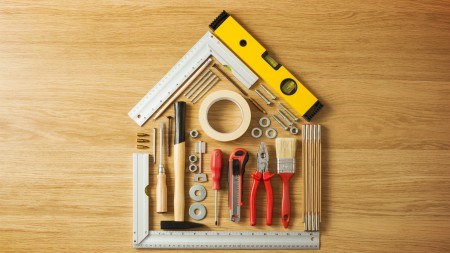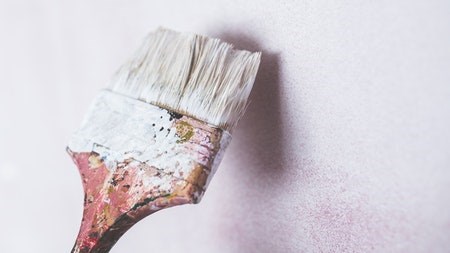If you’re thinking of taking on a few home DIY projects over the next little while, be sure to make safety one of your top priorities.
With another few weeks of lockdown heading our way, many South Africans will be on the lookout for things to do around the house to help pass the time. DIY projects are definitely a great way to improve your home while making the days fly by no matter how big or small you go! For some input on which projects are fine to tackle yourself, check out which projects you could consider tackling on your own versus those best left to the experts.
That said, before jumping into any project, it’s important to take your safety seriously – no one needs a trip to the emergency room at a time of nationwide crisis. Researching the proper safety measures and requirements are vital for whatever project you’re about to tackle. With this in mind, here are some of the most common causes behind DIY accidents with a focus on how best to avoid them:
Be responsible with ladders
If we think hard, we’re bound to know someone who has fallen off a ladder whilst embarking on a DIY project. For obvious reasons, ladders are often the cause behind most DIY injuries as people don’t seem to know (or care) how to safely use them. Instead, they take chances and insist on standing on the very top rung, trying to drill that last hole. Or they try to balance one ladder on top of another, or worse, on top of something else altogether. Suffice to say a ladder can be a great DIY tool, but only when used with the respect it deserves. Always remember that falling from any height can be dangerous, and proper ladder safety should be observed at all times. Here are some basic ladder safety pointers to consider:
- Ensure that your ladder is always placed on a stable, level and non-slip surface.
- When placing your ladder, remember the four-to-one rule: for every four feet (approximately 1.22m) you have to climb up, move the base one foot (approximately 30cm) away from the wall.
- When climbing a ladder, maintain 3 points of contact with it i.e. both hands and a foot or both feet and a hand, at all times.
- Lock all A-frame ladders when open.
- Do not stand on the top two rungs of a ladder.
- Never put a ladder in front of a door unless it is locked beforehand.
Avoid misusing tools or equipment
Another common cause behind DIY accidents is the ignorant use of tools and equipment. If whatever project you’re about to embark on requires you to use a tool or machine you haven’t used up until this point, be sure to read the manual first and familiarise yourself with how it works and what safety requirements are needed. Always make sure you are using the right tool for the job at hand and employ common sense when handling potentially harmful machinery. For example:
- Unplug your drill before fitting any parts.
- Avoid wearing any loose clothing or jewellery which can get caught in machines accidentally.
- Don't use any tools in damp conditions.
- Never pull out the plug to stop a tool instead of using the on/off switch.
Don't take silly or uneducated risks
It’s very important to remember that just because you think you can, doesn’t mean you should! Often accidents can happen when we assume we know what we’re doing, and as mentioned earlier, we should really consider leaving certain jobs to the experts! That said, it’s advisable to be very cautious when tackling any DIY project that involves electricity or gas. If you are confident that you can safely DIY something, don’t take any unnecessary risks. For example, always switch off the mains when attending to anything electrical. A few other simple safety considerations to avoid any risk of injury include:
- Never performing any electrical jobs when standing on an aluminium ladder.
- Wearing shoes with rubber soles or standing on a rubber mat when working with electricity.
- Not touching any gas pipes or working close to them to avoid accidental damage and or a leak. Remember gas is often undetectable until a potentially dangerous build-up has occurred.
Always dress the part
When it comes to keeping yourself physically safe, never compromise! Sometimes, DIY related injuries can be caused by unforeseen hazards so always dress with safety in mind no matter the task at hand. Here is a roundup of the basics to self-protection when embarking on a DIY project:
- Shield your eyes by wearing protective glasses whenever working on projects that create flying debris, like welding, or allow for exposure to harmful chemicals.
- Be sure to use tight-fitting glasses or eyewear that conforms to the contours of your face for maximum protection.
- Protect your body and your skin by wearing the appropriate clothing. Anything that is too loose, too exposing, or potentially flammable could put you at a risk of injury.
- Wear gloves or a mask if working with any chemicals or when woodworking or sanding.
If you plan on spending some of your remaining time in lockdown engaging in DIY, be sure to really consider your safety before picking up that screwdriver! Remember that no job is worth risking unnecessary injury, so do your research and pay attention to safety precautions no matter what you get up to. At the end of the day, you want to be left with a sense of accomplishment – not a doctor’s bill.




